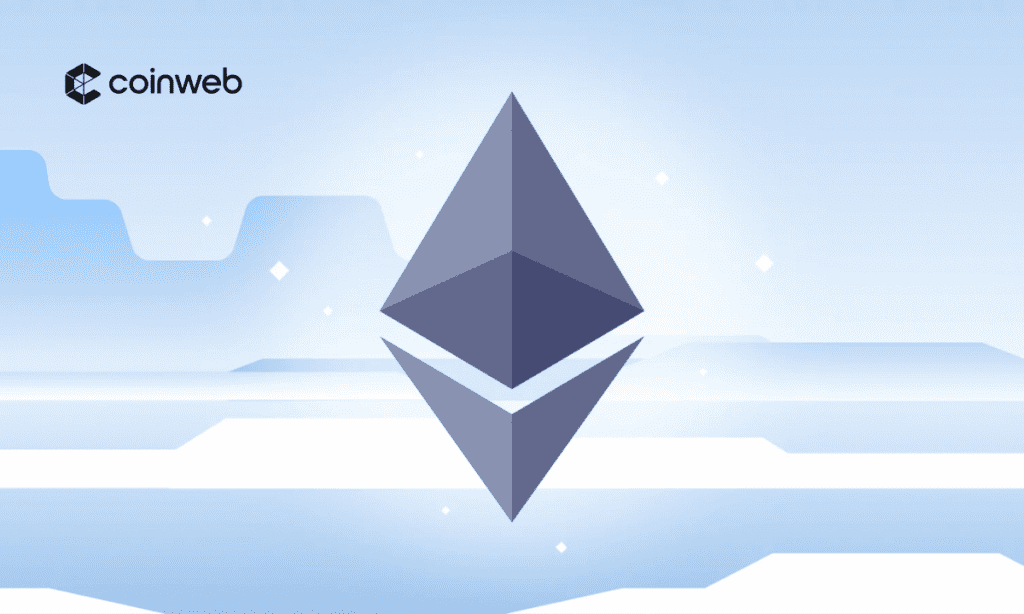Hackers executed Curve exploit through a vulnerability in Curve's liquidity pools, stealing $47 million from various DeFi protocols.
Learn more about Ethereum
Table of Content
Ethereum (ETH) price has increased today.
Ethereum (ETH) is priced at $3,252.92 today, with a 24-hour trading volume of $11,845,876,334.50. It is reflecting a 3.69% increase over the last 24 hours and a 3.30% increase over the past 7 days. With a circulating supply of 122 Million ETH, Ethereum’s current market cap is at $397,022,599,693.56.
Exploring the Concept of Ethereum (ETH)
Ethereum, represented by the digital currency Ether, is a decentralized blockchain system that operates on an open-source platform. It serves as a foundation for various other cryptocurrencies and enables the execution of decentralized smart contracts.
Vitalik Buterin outlined the concept of Ethereum in a whitepaper in 2013. To fund the project, Buterin and his co-founders organized an online public crowd sale in 2014, raising $18.3 million in Bitcoin.
With an initial coin offering (ICO) price of $0.311, over 60 million Ether was sold. Since then, Ethereum has experienced an annualized return on investment (ROI) of over 270%, making it profitable since its inception.
The official launch of Ethereum was on July 30, 2015, with the prototype “Frontier.” Multiple network updates, such as “Constantinople,” “Istanbul,” “Muir Glacier,” “Berlin,” and the most recent “London” hard fork on Aug. 5, 2021, have taken place since its launch.
The main objective of Ethereum is to become a global platform for decentralized applications, allowing users worldwide to create and execute software resistant to censorship, downtime, and fraud.

Who are the Founders of Ethereum?
Ethereum has eight co-founders, a considerable number for a cryptocurrency project. The founders first collaborated in Zug, Switzerland, on June 7, 2014.
Vitalik Buterin, a Russian-Canadian, is the most well-known co-founder. He authored the original whitepaper and continues to work on improving the Ethereum platform. Buterin also co-founded the Bitcoin Magazine news website.
British programmer Gavin Wood is another significant co-founder. He developed the first implementation of Ethereum using the C++ programming language, proposed the native programming language Solidity, and served as the first chief technology officer of the Ethereum Foundation.
Wood previously worked as a research scientist at Microsoft before establishing the Web3 Foundation.
Other co-founders include Anthony Di Iorio, Charles Hoskinson, Mihai Alisie, Joseph Lubin, and Amir Chetrit.
They played crucial roles in supporting and establishing the Ethereum Foundation and helping fund the early stages of Ethereum’s development.
Exploring Ethereum’s Uniqueness
Ethereum introduced a new concept of blockchain by introducing smart contract technology.
Smart contracts are computer programs that automatically fulfill agreements between multiple parties on the internet.
They aim to reduce the need for intermediaries, enhance transaction reliability, and lower transaction costs. Ethereum’s key innovation was its platform’s ability to execute smart contracts using blockchain technology.
Co-founder Gavin Wood described Ethereum’s blockchain as a “global computer,” enabling any program to become more robust, resistant to censorship, and less prone to fraud when running on a distributed network of public nodes.
In addition to smart contracts, Ethereum’s blockchain can host other cryptocurrencies known as “tokens.” These tokens adhere to the ERC-20 compatibility standard, and over 280,000 ERC-20 tokens have been launched on the Ethereum platform.
Many of these tokens, including USDT, LINK, and BNB, rank among the top 100 cryptocurrencies by market capitalization. The rise of Play2Earn games has also sparked increased interest in the exchange rate between ETH and PHP.
See our in-depth guide on How to Invest in Ethereum.
Understanding Ethereum Name Service (ENS)
The Ethereum Name Service (ENS) is a distributed naming system based on the Ethereum blockchain. It serves as the Web3 version of the traditional DNS (domain name service).
Cryptocurrency addresses typically consist of long, complex strings of numbers and letters that are difficult for humans to read and remember. ENS solves this problem by assigning human-readable names to these machine-readable identifiers.
For example, a long Ethereum address like “0xDG42OF3F5B2L46998338B5ADA84795NGA3O525E” can be simplified to “Satoshi.eth.” ENS also enables users to receive various types of cryptocurrencies and NFTs through their ENS domain.
ENS is built upon two Ethereum smart contracts: the ENS registry and the Resolver. The registry records ownership, domain resolvers, and caching information, while the Resolver translates domain names into machine-readable addresses.
ENS not only supports .eth names but also integrates with popular DNS names such as .com, .org, .io, and .app.
Exploring Ethereum’s Competitors
Although Ethereum remains the second-largest cryptocurrency by market capitalization, it has flaws. High gas fees and low transaction throughput have prompted the emergence of alternative blockchains aiming to offer cheaper and faster transactions compared to Ethereum.
These substitute blockchains are often referred to as “Ethereum Killers.”
Examples include:
Each blockchain adopts a unique consensus model to address the limitations of Ethereum’s previous proof-of-work (PoW) and now proof-of-stake (PoS) algorithm. For instance, Solana uses proof-of-history (PoH), while Binance Smart Chain utilizes proof-of-authority (PoA) and delegated proof-of-stake (DPoS).
However, none of these Ethereum competitors have managed to surpass Ethereum’s status as the second-largest cryptocurrency or its dominance in the NFT trading sphere.
Understanding EIP-1559
EIP-1559, short for Ethereum Improvement Proposal 1559, introduced significant changes to how gas fees are estimated on the Ethereum blockchain. Before this upgrade, users participated in open auctions to have their transactions included in blocks. The highest bidder would win, resulting in varying gas fees, up to $300 pr—transaction on its worst.
EIP-1559 replaces this auction-based system with an automated bidding process. It establishes a base fee that determines the cost of transactions in the next block, which adjusts based on network congestion. Users can pay a priority fee to miners to expedite their transactions.
Additionally, EIP-1559 implements a fee-burning mechanism. A portion of the base fee is burned and permanently removed from circulation. This mechanism aims to reduce the circulating supply of Ether and potentially increase its long-term value.
Within two months of implementing the London hard fork, the Ethereum network burned over $1 billion worth of Ether.
Exploring Ethereum’s Coin Supply
As of September 2023, the circulation includes approximately 120.23 million ETH coins. The Ethereum blockchain issued 72 million of these in its genesis block. The initial contributors to the 2014 crowd sale received 60 million Ether, while the development fund received 12 million.
The remaining ETH coins have been issued as block rewards to miners on the Ethereum network. The block reward started at 5 ETH in 2015, decreased to 3 ETH in late 2017, and reduced to 2 ETH in early 2019. On average, it takes around 13-15 seconds to mine an Ethereum block.
The EIP-1559 upgrade, implemented through the London hard fork, introduced a new mechanism for handling transaction fees. Base fees used in transactions are burned, effectively reducing the circulating supply of Ether.
This deflationary aspect has garnered attention from ETH holders, as it may contribute to appreciating Ethereum’s price over time.
Securing the Ethereum Network
As of September 2023, securing the network through a proof-of-stake algorithm with the Ethereum 2.0 update began in late 2020. The Ethereum 2.0 Beacon Chain (Phase 0) launch enabled staking.
To stake on Ethereum, you must deposit a minimum of 32 ETH and activate validator software. This process helps secure the network by storing data, processing transactions, and adding new blocks to the blockchain.
Firstly, early stakers earned rewards of about 20%. However, experts predict that these rewards will drop to around 7-4.5% annually in the future.
Furthermore, once users stake Ethereum, it remains locked in the network. This lockup will persist until the completion of the full Ethereum 2.0 upgrade, a process that might span months or potentially even years.
Where to buy Ethereum (ETH)
As the second-largest cryptocurrency, Ethereum is readily available for purchase on major crypto exchanges such as:


More details
Binance is a great combination of low fees, deep liquidity and multiple cryptocurrencies and trading pairs. We have tested every aspect of it and it STILL holds its reign as the top exchange in the world. In our view, it is the perfect crypto exchange for both newbies and advanced traders alike.
-
Biggest exchange in the world.
-
Industry's lowest trading fees.
-
Advance trading options like leverage trading.
-
600+ crypto options, 150+ for the US.
-
Lucrative on-site staking options.
-
Hiccups in account verification.
-
Less regulated than some competitors.
-
The corporate structure is not transparently.


More details
Coinbase is one of the largest crypto exchanges in the world and a widely-used platform for buying, selling, and trading over 200 cryptocurrencies. It offers trading solutions for beginner, advanced, and institutional traders alike. Take a look at what makes it an excellent option for individual traders looking to trade in cryptocurrencies and beyond.
-
A wide-selection of coin offerings.
-
Most secure online crypto platforms.
-
Top-rated mobile app.
-
Easy interface and user-friendly.
-
Expensive and complex fee structure for beginners
-
Higher fees as compared to other cryptocurrency exchanges.
-
Slow customer support.


More details
OKX crypto exchange supports over 300 digital assets and over 80 fiat currencies. It is accessible in over 100 countries and territories across the world. It has one of the highest trading volumes in the crypto world and is a fantastic mobile app that offers all services on the go. The trading fees are very low. Its major drawback is its unavailability in certain countries.
-
Supports numerous tokens.
-
Great Mobile app.
-
Extensive educational resources.
-
Provision of multi-lingual services.
-
Geographical limitation.
-
KYC limitations.
These exchanges offer ETH trading pairs, including ETH/USD, ETH/GBP, ETH/AUD, and ETH/JPY.
Ethereum is a system that uses a cryptocurrency called Ether and lets people create smart contracts on a blockchain. It's like a global computer that anyone can use and is resistant to fraud and censorship.
Ethereum was created by eight co-founders, including Vitalik Buterin and Gavin Wood. They all worked together to build and fund Ethereum, which was launched in 2015.
While Ethereum is popular, it does have problems like high fees and slow transactions. Some other blockchains try to do similar things but faster and cheaper, like Cardano and Solana.
You can buy Ethereum on different online platforms called crypto exchanges. Some big ones where you can buy it include Binance, Coinbase, and Kraken.
Ethereum's initial coin offering (ICO) price was $0.311, and during this time, over 60 million Ether was sold. Since then, Ethereum has been a profitable investment, providing an annualized return on investment (ROI) of over 270%.







